Many thanks to UW-Madison iSchool graduate student, Thalia Coombs, for her contribution to this exhibit!
You may recall the All-American Girls Professional Baseball League (AAGPBL) from the 1992 film, A League of Their Own starring Geena Davis and Tom Hanks. Who will ever forget that “there’s no crying in baseball!” But did you know the AAGPBL has deep roots in the upper Midwest, including Wisconsin?
AAGPBL players at spring training in Cuba, 1947
Source: National Baseball Hall of Fame and Museum
The AAGPBL was founded by Chicago manufacturer and baseball executive, Philip K. Wrigley in 1943. The chewing-gum magnate and owner of the Chicago Cubs baseball team (and son of Wrigley Field’s namesake) feared the wartime draft might shut down major league baseball altogether. The AAGPBL lasted for 12 seasons until it disbanded in 1954. Hundreds of Major League baseball players were fighting in World War II. Wrigley hoped to sustain public interest in baseball by forming and promoting the AAGPBL. The league was centered in the upper Midwest with 15 teams based in Wisconsin, Illinois, Indiana, Minnesota, and Michigan including the Rockford Peaches, South Bend Blue Sox, Racine Belles, and Peoria Redwings.
1946 AAGPBL schedule
Source: DPLA/National Museum of American History
Wrigley sent out scouts and set up try-outs in dozens of major cities, attracting hundreds of women from all over America and Canada, all eager to join this new professional league. Many of the women recruited to play in the AAGPBL grew up in rural communities throughout the Midwest. They played baseball and softball with their siblings and schoolmates, and on local and semi-professional teams. Some had not heard of the league before traveling scouts or local managers arrived in their communities for recruiting events. Only 280 were invited to the final try-outs in Chicago where 60 were chosen to become the first women to play in the AAGPBL. For several of the women, a trip to Chicago for the final tryout was their first journey from home or their first solo travel experience.
As members of the AAGPBL, these women joined a traditionally male profession but the expectations of 1940s femininity were not relaxed for them on or off the field. Their uniforms featured short skirts which often left their legs scraped raw or badly bruised after sliding into a base. They followed strict requirements to keep their hair neat, wear makeup, and wear dresses, hats and gloves whenever appearing in public.
Racine Belles costume from “A League of their Own”
Source: Wisconsin Historical Society
Early members of the AAGPBL were sent to Charm School to learn proper posture, etiquette, and public speaking and behavior skills. Lessons included very detailed beauty and hygiene routines, approved hairstyles, fashion tips and wardrobe essentials, and how to deal with zealous baseball fans! The AAGPBL even supervised players’ off-the-field activities.
“Players will not be allowed to drive their cars past their city’s limits without the special permission of their manager. Each team will travel as a unit via method of travel provided for the league.“
From the AAGPBL Rules of Conduct
Once the season started, the women kept a rigorous schedule, with games every evening and doubleheaders on Sundays. They traveled from city to city by bus and train, always accompanied by chaperones. Response to the league and games attendance was excellent and grew over time, with crowds of thousands gathering to cheer on their local teams. Many women spoke of the camaraderie they felt with their teammates and local communities as part of the AAGPBL. They also participated in exhibition games at veterans hospitals and military bases in the United States, to boost troop morale during the war years.



L to R: Racine Belles program, 1946. Source: Wisconsin Historical Society, “Tops in Girls Sports”. Source: National Baseball Hall of Fame & Museum, Kenosha Comets program, 1947. Source: Wisconsin Historical Society
World War II ended in 1945 and men’s professional baseball resumed but the AAGPBL continued for another nine seasons. Some AAGPBL host cities organized junior leagues for girls 14 years and older. The teams also traveled to new for spring training including Pascagoula, Mississippi in 1946; Havana, Cuba in 1947; and Opalocka, Florida in 1949. By 1950, team directors voted to purchase and operate their teams independently. The rise of other forms of recreation and entertainment and the advent of televised major league games in the early 1950s impact the league’s popularity. By 1952, only six teams remained in the league and the league officially folded in 1954.
Realizing that you’re in that same Hall of Fame with Babe Ruth and Lou Gehrig and Jackie Robinson and all the rest of them, you know – it’s something.
Racine Belles centerfielder, Annastasia Batikis
On November 5, 1988, the league was inducted into the National Baseball Hall of Fame in Cooperstown, New York, and hundreds of players attended the ceremony, which featured the unveiling of the exhibit and a plaque engraved with the names of AAGPBL players. The AAGPBL exhibit is still a permanent part of the National Baseball Hall of Fame and Museum and includes uniforms, photographs, balls, scrapbooks, equipment, printed materials and other ephemera related to the AAGPBL, collected from players and their families, coaches and team staff, and fans! The exhibit was re-curated and renamed “Diamond Dreams” in 2006 and continues to inspire visitors.


Kenosha Comets programs, 1945 and 1946
Source: National Baseball Hall of Fame & Museum
In 2019, Recollection Wisconsin launched Listening to War: Wisconsin’s Wartime Oral Histories. Included in this collection are eight oral history interviews that document the experiences of Wisconsin women who played for AAGPBL during and after World War II.
Their stories are a fascinating look at a unique milestone moment for women in sports. They speak candidly about their childhood, early education, growing up and playing baseball, their recruitment to play for the AAGPBL, their training, and life on the road with their teams. Many share details of specific games, teams, coaches and their baseball career accomplishments. They recall public reception of their league and games, and their individual feelings about the league’s trajectory after World War II. Many continued to play baseball or be involved in sports after their participation in the AAGPBL.
You can hear these remarkable women share their stories here:
- Mary Froning O’Meara (South Bend Blue Sox)
- Ruth “Boots” Ries Zillmer (Rockford Peaches)
- Jacqueline “Jackie” Mattson Baumgart (South Bend Blue Sox, Rockford Peaches, Springfield Sallies)
- Annastasia Batikis, (Racine Belles)
- Joyce Westerman (Grand Rapids Chicks, Fort Wayne Daisies, Peoria Redwings, Racine Belles, South Bend Blue Sox)
- Ellen Ahrndt Proefrock (South Bend Blue Sox)
- Louise Erickson Sauer (Racine Belles, Rockford Peaches)
- Dolly Vanderlip “Lippy” Ozburn (Fort Wayne Daisies)
AAGPBL Reunion photograph, 1987
Source: National Baseball Hall of Fame and Museum
The AAGPBL operated from 1943 to 1954 and represents one of the most unique aspects of our nation’s baseball history. For 12 seasons, it provided over 600 female athletes the opportunity to play professional baseball and to play it at a level previously unavailable to them.
When asked if she felt if she and other members of the AAGPBL were pioneers of women’s sports in the United States, South Bend Blue Sox outfielder Mary Froning O’Meara recalled, “…it’s something that I never thought we would ever be recognized for. And so I’m glad they did.”
For more information about the All-American Girls Professional Baseball League, take a look at the following resources.
Resources
- All American Girls Professional Baseball League
- AAGPBL (Wikipedia)
- National Baseball Hall of Fame
- The National Museum of American History
- A League of their own. All American Girls Baseball League Thrives During WWII (Wisconsin Historical Society)
- Racine Belles Movie Costume (Wisconsin Historical Society)
- Oral History Interviews of The Forgotten Champs: The 1944 Milwaukee Chicks Oral History Project (MINDS@UW/UW-Milwaukee)
- All American Girls Baseball League Interviews (Grand Valley State University)
- All American Girls Professional Baseball League Collection (Smithsonian Institute)
- The Women of the All-American Girls Professional Baseball League: Pioneers in Their Own Right by Clement C. GrawOzburn, UW LaCrosse Journal for Undergraduate Research Vol. VII (2004)
- The Origins and History of the All-American Girls Professional Baseball League by Merrie A. Fidler (2006)

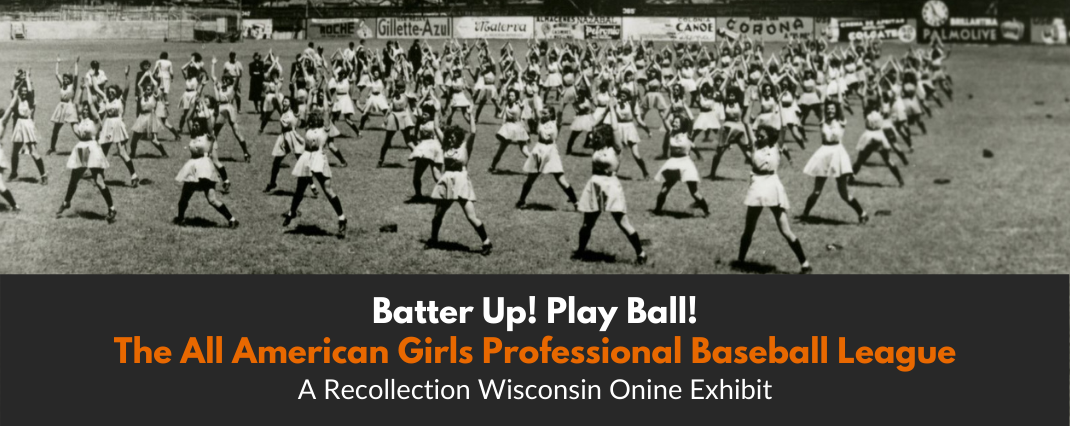
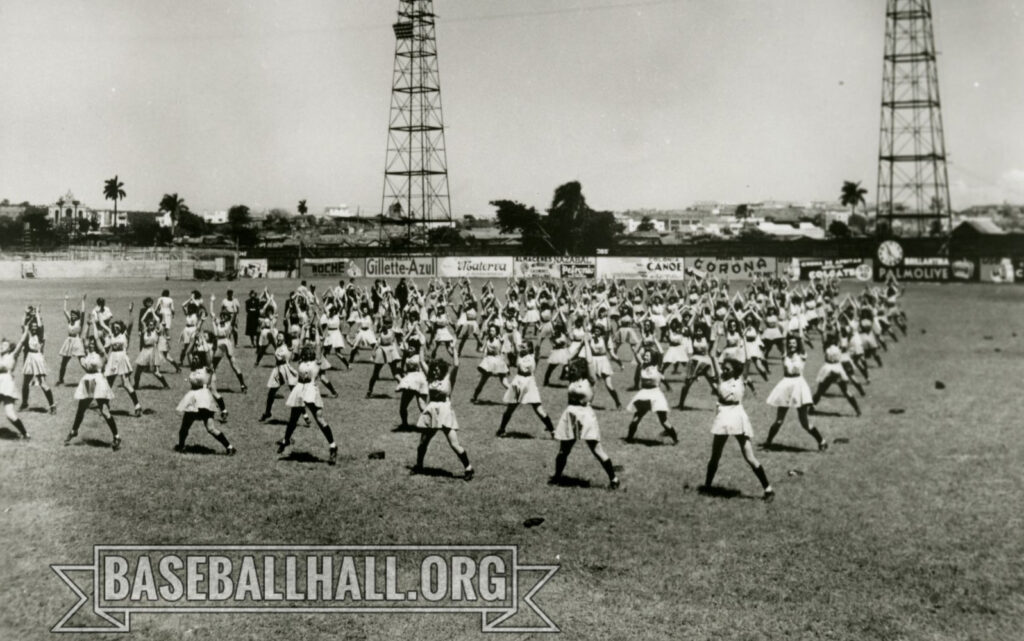
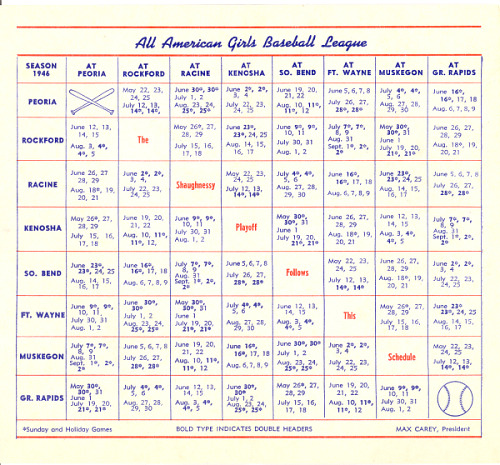
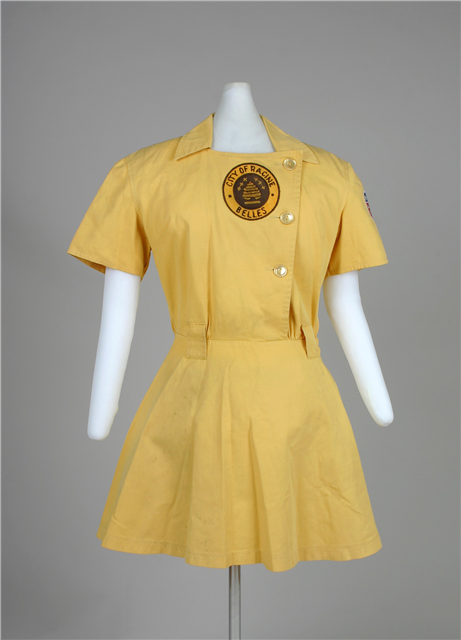
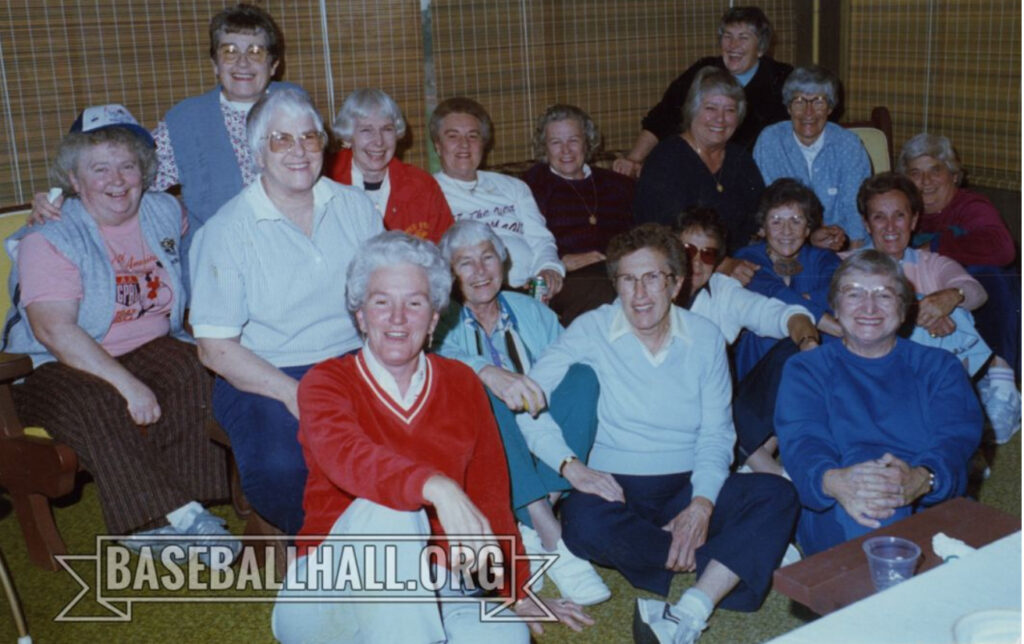


You must be logged in to post a comment.